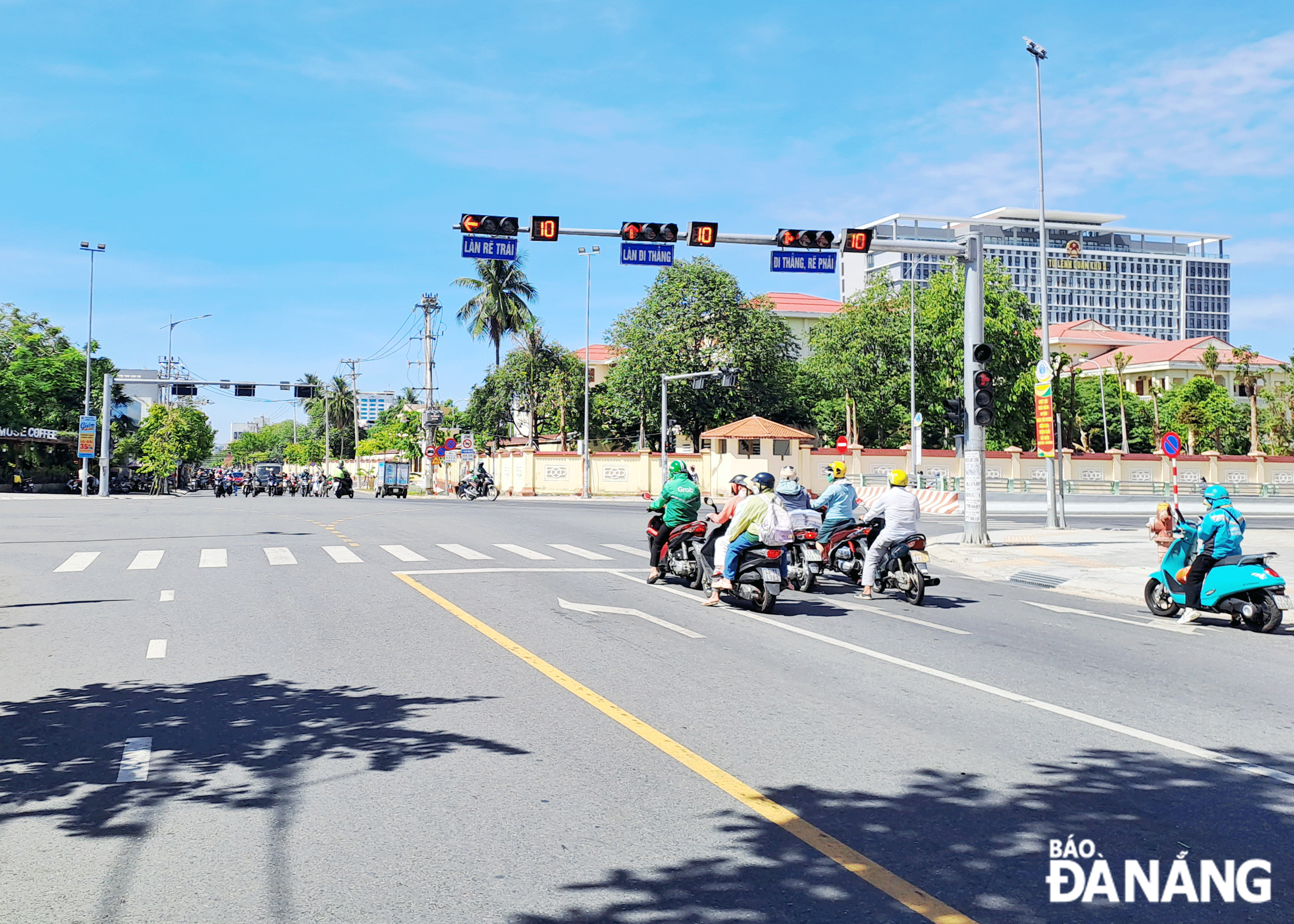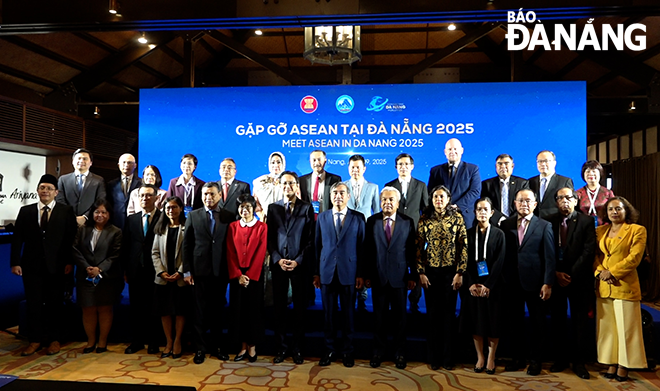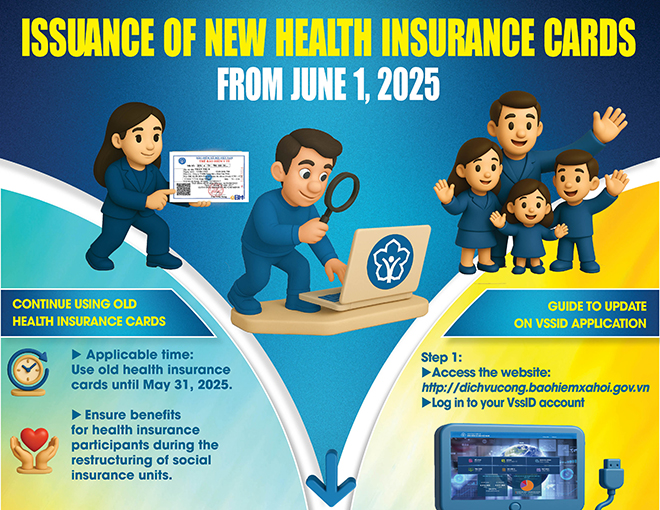Da Nang invests in smart transportation
Recently, Da Nang has made significant investments in its transportation system, particularly in traffic signals and surveillance cameras. This investment plays a crucial role in managing traffic flow, ensuring public safety, and maintaining the city's tranquility.
 |
| Currently, the traffic signal system in the city has been upgraded to LED signals and modern surveillance cameras, enhancing the management of the transportation network. Photo: K.H |
In 2022, Da Nang received the Viet Nam Smart Transportation Award, laying an essential foundation for integrating the central coastal city with other leading provinces and cities nationwide in the goal of building a smart city. This achievement is the result of the city's long-term focus and investment in its transportation system. Da Nang Weekend Newspaper interviewed Mr Bui Hong Trung, Director of the city's Department of Transport, about the effectiveness of the city's smart transportation system.
The city no longer has scattered, small-scale cameras, instead, the camera system now covers key areas. Could you elaborate on the role of these "eyes" in effectively managing, directing, and handling traffic?
Currently, the city has deployed hundreds of "surveillance cameras" at various points and in residential areas. The direct impact of this model has helped the city government reduce traffic congestion and waterlogging, and ensure public hygiene-persistent issues for many years. The traffic signal system has been upgraded to LED signals and modern surveillance cameras, improving the management of the transportation network.
There are two main systems for operating traffic signals, which are traffic lights and traffic flow counting surveillance cameras. The city has installed 201 traffic signal control systems and 251 surveillance cameras connected to the central traffic control and monitoring centre across the city. The camera system has also been upgraded with smart technology, capable of recognising licence plates and analysing vehicle behavior, playing a crucial role in efficiently controlling urban traffic, avoiding congestion, and reducing waiting time for commuters and commercial transport.
The Department of Transport utilises data from these surveillance cameras to assist in planning the road network and assessing the need for vehicle dispersion. The most significant aspect is analysing transportation needs based on vehicle data, aiding in the management of vehicles and drivers within the transport sector. The Department has also integrated traffic signal systems and surveillance cameras in traffic management, controlling signal cycles. Both systems include vehicle counting functions and will eventually move towards automatic traffic signal control based on data analysis and optimising vehicle flow through AI algorithms at traffic points. This technology is currently being tested at two intersections, Ha Huy Tap - Huynh Ngoc Hue and Nui Thanh - Phan Dang Luu.
How are the "surveillance cameras" like traffic signals and surveillance cameras operated? What contributions have they made to the city's transportation system?
As I mentioned, the calculation and construction of traffic regulation plans are focused on the "green wave" trend. This means that on one main road, vehicles encountering a green light will continue to get green lights, or on intersecting roads, red lights will be synchronised. This is an optimal solution. Additionally, the traffic signal and camera systems are being integrated and exploited for vehicle counting, traffic flow calculation, and particularly vehicle type classification, whether personal or commercial, to aid traffic management and regulation.
The city has a comprehensive traffic control infrastructure and gradually eliminates issues from outdated technology. Major accomplishments include integrating traffic signal systems and surveillance cameras in traffic regulation and signal cycle control. However, during implementation, we face challenges like technology synchronisation and optimising algorithms due to latency between different systems. Furthermore, rapid technological advancements mean that by the time investment procedures are completed, the initial plans may no longer be suitable.
Could you share the successes of the transport sector since receiving the Viet Nam Smart Transportation Award in 2022 and current infrastructure management and investment efforts?
The Viet Nam Smart Transportation Award 2022 is the result of contributions from many sectors, not just transport. This achievement comes from a process of accumulating data from various sectors, including driver licensing, business registration, logistics, and others. Additionally, there is a need for data accumulation from central to local agencies, enabling data connection and sharing. Intelligence requires a large enough dataset for analysis and shared data to address arising issues.
Recent achievements in the transport sector include the application of technology in traffic management, contributing to the development of modern, civilised urban infrastructure. Notably, we are building and perfecting a chatbot system to respond to public inquiries, gradually upgrading data analysis systems; integrating GIS traffic maps with data on traffic infrastructure, road scale, construction permits; and continuing to invest in surveillance cameras on main urban roads for traffic management and monitoring by the public and authorities.
The Department of Transport is developing a specialised database system connected to the Ministry of Transport's database to manage traffic information, integrating data and allowing citizens to renew driver’s licences through data portals at medical centres. In the future, citizens will be able to renew driver’s licences through data portals at ward, district, and municipal administrative centers, eliminating the need to visit the Department of Transport.
Currently, the transport sector and Da Nang's IOC Centre are coordinating to operate and retrieve data from the camera system to provide on the city's shared data portal. The Traffic Control Centre (TMC) provides services for traffic control management needs.
Thank you for the interview!
Reporting by KHANH HOA - Translating by TRUC VY








